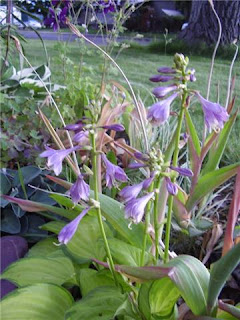 I think I have covered most of the plants I missed last summer and worked them in here. Before we get any farther along towards spring I should probably do something on winter gardens and landscapes. Especially since it has been trying without much success to act like winter the last several weeks. The light snows have not lasted very long and the total accumulation is just barely over fifty percent of normal for the region. Perhaps it will all be corrected in April with a few but overly abundant late spring snows that used to characterize Missoula springs.
I think I have covered most of the plants I missed last summer and worked them in here. Before we get any farther along towards spring I should probably do something on winter gardens and landscapes. Especially since it has been trying without much success to act like winter the last several weeks. The light snows have not lasted very long and the total accumulation is just barely over fifty percent of normal for the region. Perhaps it will all be corrected in April with a few but overly abundant late spring snows that used to characterize Missoula springs.  Very few gardens are designed with winter in mind, but in this part of the country when winter is almost as long as the time when we can actively garden it isn’t a bad idea to plan for that other long part of the year. The new white background, snow or frost, creates a dramatic and highly contrastive background, revealing depth where little was exposed across a curtain of summer greens.
Very few gardens are designed with winter in mind, but in this part of the country when winter is almost as long as the time when we can actively garden it isn’t a bad idea to plan for that other long part of the year. The new white background, snow or frost, creates a dramatic and highly contrastive background, revealing depth where little was exposed across a curtain of summer greens.
Another nice thing about gardens in winter is that we can just sit back and look at the landscape. There isn’t any mowing or pruning or weeding to worry about, none of the unpleasant tasks that take some of the fun out of gardening. It will all be taken care of during the spring cleanup as we prepare for anther season of abundant color.

And of course, what would a winter wonderland be without snow? These aspen are along the highway northeast of Ovando on Highway 200.

Next week maybe we can begin to think about spring. One of my friends informs me that the crocus in the front of her house are beginning to show so soon the blossoms will appear as well.










